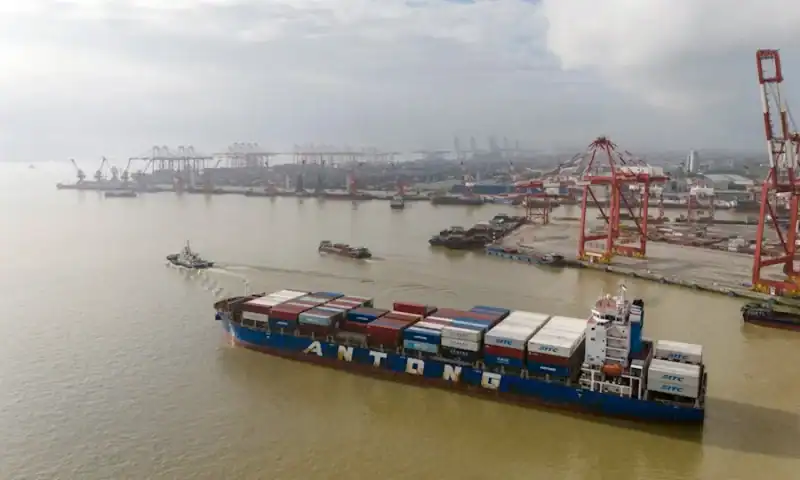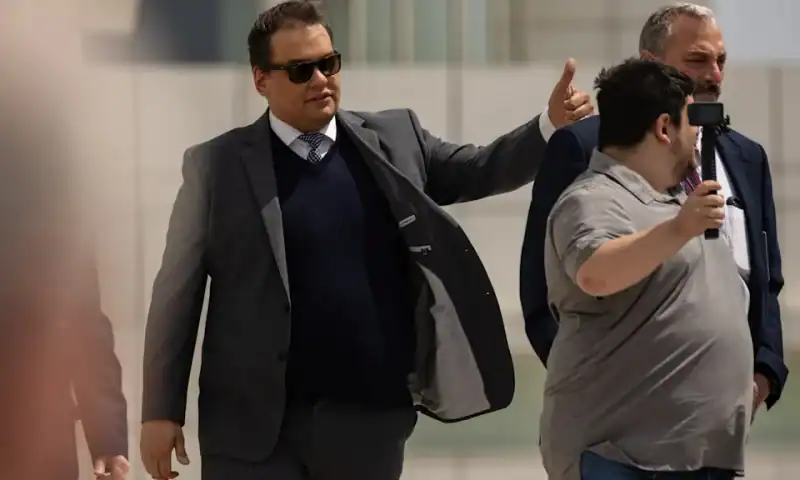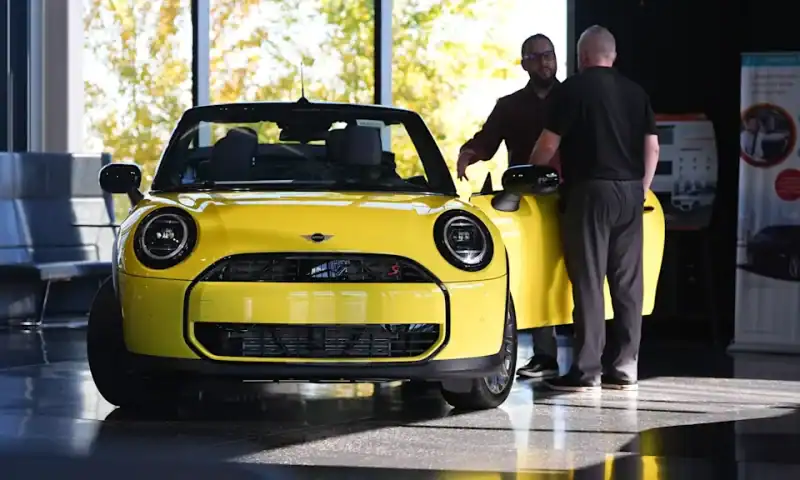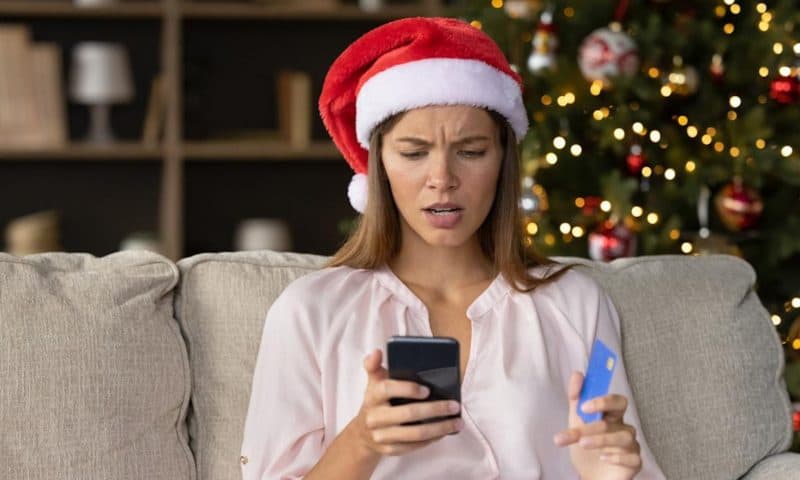Vietnam’s love affair with gas bikes is colliding with a new electric reality

HANOI, Vietnam (AP) — Vietnam is split between two visions: the rumbling, reliable gas-powered motorbikes that now rule the roads, and sleek, silent electric bikes the government says are its future.
Hanoi plans to ban fossil-fuel motorcycles from its city center in July 2026, part of a national drive to cut emissions and air pollution. Its commercial capital, Ho Chi Minh City, is weighing a similar step. By 2030, Vietnam aims for a third of cars and more than a fifth of motorbikes to run on electricity.
Some see this as an opportunity to swap out smoke-belching engines for cleaner, quieter rides, But others remain wary. Gas-powered bikes are still cheaper, sturdier, and easier to repair. Many owners worry that electric models could fall short on range, affordability, and charging convenience.
At the heart of the debate is the motorbike’s central place in Vietnamese life. The country’s 77 million two-wheelers — including 7 million in Hanoi and 8.5 million in Ho Chi Minh City — power small businesses, shape daily commerce, and set the rhythm of cities. Shopkeepers pile goods onto scooters to push through traffic, while families squeeze three generations onto a single bike for the school run.
While delivery drivers and mechanics are scrambling, electric bike start ups are opening new retail stores and e-bike sales are climbing.
Vietnam’s biggest motorbike makers, Honda and Yamaha, say the 2026 timeline is too ambitious. Vietnamese electric vehicle companies — start ups like Dat Bike or the larger VinFast, backed by Vietnam’s largest conglomerate VinGroup — and the Chinese electric bikemaker Yadea are betting on an electric future.
Ta Manh Cuong, 45, a ride-hailing driver who earns about $20 on good days, calls his battered but reliable motorbike his “iron horse,” a slang riders use for their faithful companion through the city’s daily chaos. He’d be willing to shift to an electric bike, would even welcome it if it cost less.
“But right now I can’t afford to buy an electric bike,” he said.
Vietnam’s motorbike market, at about 3.5 million units a year, is the second-largest in Southeast Asia. It’s also among the most electrified markets for two-wheelers, ranking third only to China and India, though electric motorbikes make up about 12% of total sales.
Electrifying remaining two-wheelers is key for cutting tailpipe emissions and clearing smog from the streets. EVs are more energy efficient than gas engines, said Zifei Yang of the International Council on Clean Transportation. About 70,000 deaths in Vietnam each year are linked to polluted air, according to the Boston-based nonprofit Health Effects Institute.
Unlike the car market, Yang added, motorbikes sold in Vietnam are made there. That means a shift to electric bikes could boost local producers, foster startups, and attract new investment. Vietnam’s transition could also shape other developing markets.
“These countries look at each other. Look at the experience,” she said.
Electric motorbike sales have surged since the ban was announced, with purchases of smaller bikes up 89% and full-sized bikes 197% in the first eight months of 2025. VinFast led as its sales more than quadrupled, outpacing Yadea and other local rivals, according to industry tracker MotorcyclesData.
Yang said government subsidies to scrap old motorbikes could help riders like Cuong. While better public transport in crowded city centers would also encourage the shift to electric vehicles. She added that ride-hailing fleets stand to gain too since they travel longer distances and electric bikes could help them save on fuel. Stations where riders can replace depleted batteries with a fully charged one instead of waiting for it to recharge would also help.
Yang said smaller batteries make home charging easier, battery costs are falling globally, and EVs are no more fire-prone than older vehicles, though such fires need special training and strict safety standards.
Ho Chi Minh City plans to replace 400,000 gasoline motorbikes with electric ones by 2028, starting with a 2026 ban on using gas bikes for ride-hailing and delivery. The city will offer low-interest loans, tax breaks and set up low-emission zones to curb pollution. In Hanoi, people affected by the ban can get $120–$200 in subsidies to buy electric bikes worth at least $590, depending on income, and won’t have to pay new registration or license plate fees until 2030.
VinFast looks set to profit from the transition. Its ride-hailing company, Green SM, surpassed Singapore-based regional ride-hailing firm Grab in February to become the market leader in Vietnam. It soon will launch its first battery‑swapping electric motorbike, selling for about $760. It plans, also, to build 150,000 battery-swapping stations nationwide within three years.
VinFast is partnering with Vietnamese banks to offer low‑interest loans and subsidies to boost electric vehicle adoption, including covering up to 90% of costs and waiving registration fees.
These policies and incentives can encourage more purchases of electric motorbikes, said Dat Bike CEO and founder Son Nguyen, but long-term success hinges on making electric bikes that deliver high performance, long ranges and fast charging at prices equal to or better than gas-guzzling motorbikes. “Incentives can help add momentum, but long-term success depends on building products that win on their own merits,” he said.
Dat Bike raised $22 million in September from private investors, nearly doubling its capital to $47 million. The company said it will use the funding to boost production, research and expand its sales.
Honda dominates Vietnam’s motorcycle market with a more than 80% market share. It sold about 2.3 million bikes in Vietnam from April 2024 to March 2025 and exported 300,000 more, cementing the country as both a top market and a key production hub.
Yamaha trails with about a 17% share. Through Vietnam’s manufacturers’ association, the two companies said the 2026 ban is too rushed. Honda only began selling e-bikes this year and warned that replacing millions of bikes quickly would strain consumers.
Honda and the Vietnam’s motorcycle manufacturers’ association didn’t respond to requests for comment. Yamaha told The Associated Press that it was reviewing the plan and couldn’t respond yet.
For now, many businesses are hedging their bets. Bao Ngoc Cao, who rents motorbikes to expats and tourists, said she was “terrified” when she first heard about the ban. Her business runs on the principle that bikes are cheap — costing about $80 monthly. Losing access to Hanoi’s most touristy streets would cut her off from her core customers, and while interest in EVs is growing, current subsidies aren’t nearly enough for her to replace her fleet. Still, she says she supports the ban in principle, welcoming the promise of cleaner air and healthier streets.
“We are just waiting to get more clarity and see what happens,” she said.






































